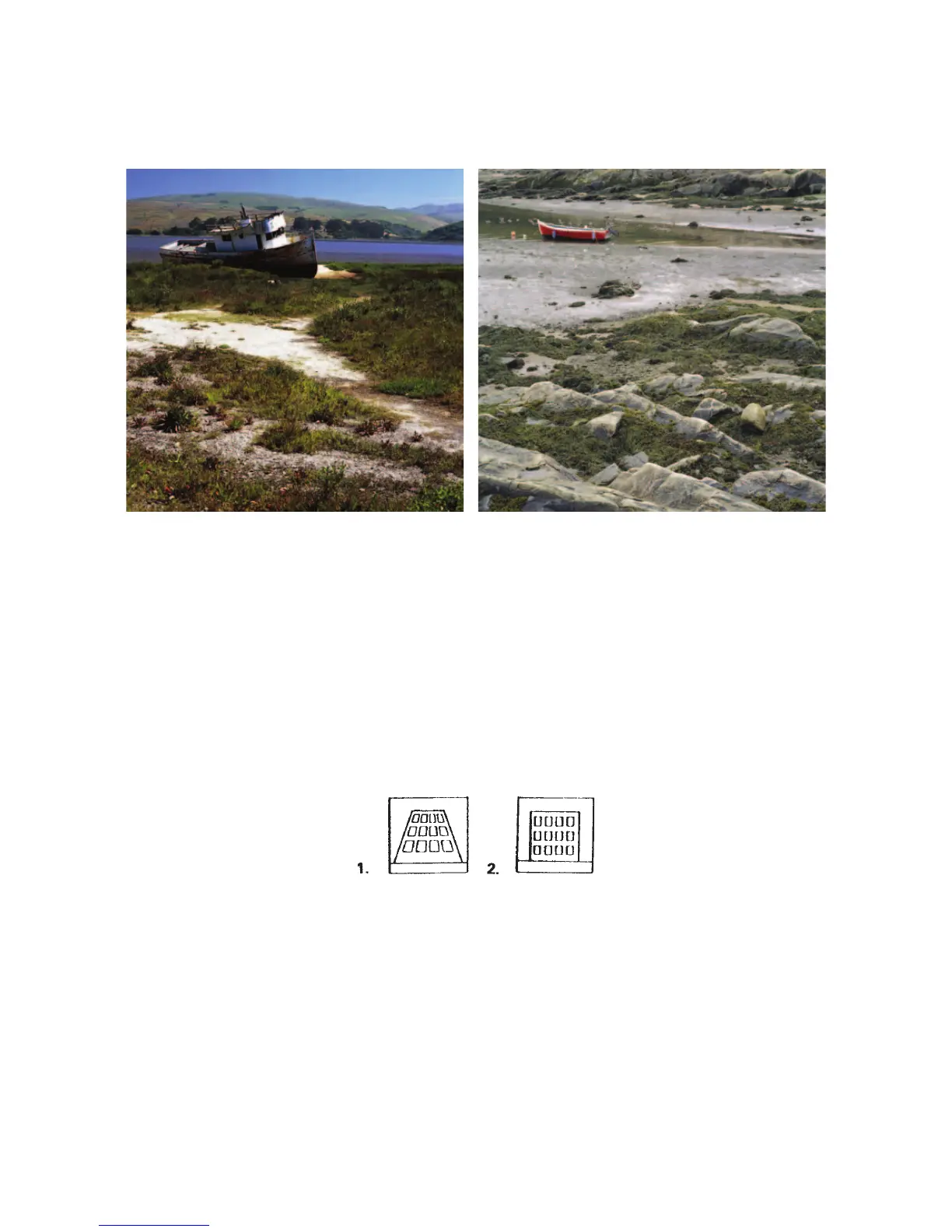Lens Characteristics and Specifi cations 267
Figure 14-28 Wide angle photography. Two examples where short focal length lenses were used
not just to cover a larger area but to add depth and a three-dimensional feeling to outdoor
scenes. Both images composed with the boat about 1/3 from the top and 1/3 from the left
border of the image. (Photos by Ernst Wildi.)
CORRECTING VERTICALS
The vertical lines of a building or other object appear in the fi nished picture vertical and
parallel to each other only if the camera is level, with the image plane parallel to the building.
When the camera is tilted upward or downward, the verticals slant toward each other, and
the building seems to be falling over (see Figure 14-29).
Figure 14-29 Slanted verticals. Tilting the camera to cover a building from bottom to top results
in slanted verticals (1). To record straight verticals (2), the image plane must be parallel to the
building.
While this effect can be corrected in the computer or by using special equipment like
the FlexBody, ArcBody or PC Mutar, it is worthwhile realizing that there is often a much sim-
pler approach for recording a perfect image in the camera. Consider photographing the sub-
ject with a longer focal length from a longer distance if that is possible. The longer distance
may eliminate or at least reduce the need for tilting the camera (see Figures 14-30 and 14-31)
thus recording the subject in a completely professional manner.

